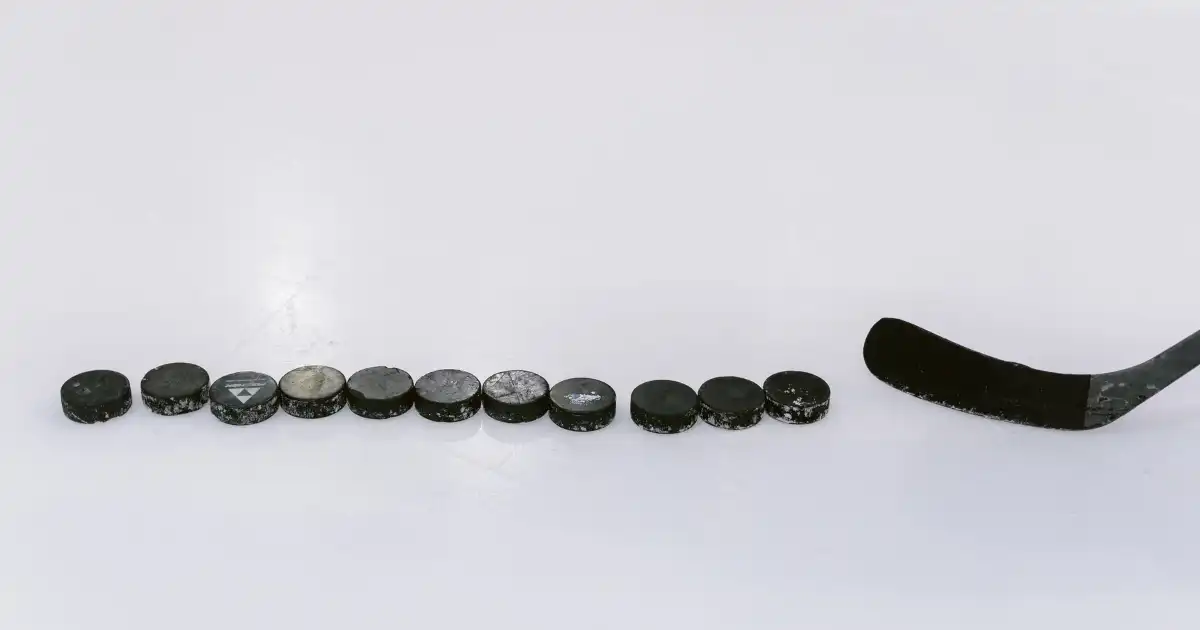When it comes to sharpening your skills, nothing beats repetition—and that’s exactly where stickhandling balls and training pucks come in. These training tools are designed to simulate the feel of puck handling in off-ice or dryland settings, helping players improve hand speed, reaction time, and puck control. But do they actually make a difference? Let’s break it down.
What Are Stickhandling Balls and Training Pucks?
Stickhandling balls are small, hard balls—often made of rubber, plastic, or composite—that mimic the weight and feel of a hockey puck. They’re used for off-ice drills to practice quick hands, tight control, and fakes. Some are lighter than regulation pucks to help with speed training, while others are heavier to build strength and improve muscle memory.
Training pucks, on the other hand, come in various weights and materials. Some replicate game-weight pucks for shooting drills, while others are heavier to enhance stick strength and puck stability. They’re often used on synthetic ice or shooting pads to mimic on-ice conditions.
The Science Behind Skill Progression
The biggest benefit of stickhandling balls and training pucks is the neuro-muscular connection they develop. These tools help you build “soft hands”—a hockey term for puck control that’s quick and smooth. By isolating the movement and practicing in rapid bursts, players teach their brain and muscles to move together with precision.
Think of it like weightlifting for your hands and wrists. Heavier training pucks develop forearm and wrist strength, while lighter stickhandling balls boost hand speed and responsiveness. Alternating between different weights can result in more dynamic control during high-speed gameplay.
Benefits of Using Stickhandling Balls and Training Pucks
1. Increased Hand Speed
Training with lighter stickhandling balls forces your hands to move faster, increasing your reaction time when handling a real puck.
2. Improved Puck Feel
Switching between different puck weights makes your on-ice stickhandling feel more natural and controlled.
3. Enhanced Off-Ice Practice
Not everyone has 24/7 access to ice. Stickhandling balls and training pucks give players a low-cost way to train in basements, garages, or driveways.
4. Develops Muscle Memory
Repeating drills with these tools embeds movement patterns into your brain. The more you do it, the more automatic your handling becomes on the ice.
5. Better Coordination
These tools improve hand-eye coordination, which is crucial for dangling around defenders or catching tough passes.
6. Versatility in Drills
You can use them for basic toe-drags, tight turns, cone weaves, or advanced skill moves—making them suitable for all skill levels.
7. Physical Conditioning
Heavier training pucks engage the forearm muscles, making your wrists stronger and improving shot power and stability.
8. Mental Focus
Stickhandling drills with these tools require intense concentration. This helps simulate in-game pressure situations, sharpening mental focus along with technical skill.
Who Should Use Stickhandling Balls and Training Pucks?
Everyone from young beginners to elite athletes can benefit. Youth players get a head start on motor skills and control, while pros use them to fine-tune their touch. Goalies can even use training pucks for reaction drills and rebound control. No matter your level, adding these tools to your workout can create meaningful results over time.
Training Tips to Maximize Your Gear
• Use a stickhandling surface like a shooting pad or synthetic ice to protect your stick and mimic game conditions.
• Work with different ball/puck weights during one session to develop a full range of motion and control.
• Combine stickhandling drills with footwork to simulate real-time in-game movement.
• Set up cones, dangles, or obstacles to work on agility and directional changes.
• Use a timer or metronome to increase pace and challenge yourself with consistent reps.
Stickhandling Balls vs. Training Pucks: What’s the Difference?
While both tools aim to improve puck control, each has its niche. Stickhandling balls are typically better for rapid hand speed drills and off-ice finesse work. They glide faster and are ideal for quick moves. Training pucks more closely mimic the actual puck, making them better suited for shooting practice and drills where weight and resistance matter.
Many players find that alternating between both provides the most well-rounded results. For example, a warm-up with a stickhandling ball followed by resistance drills with a heavy training puck can prep the body for real-ice action.
Do Stickhandling Balls and Training Pucks Actually Work?
The short answer: absolutely. While they won’t turn you into an all-star overnight, consistent use of stickhandling balls and training pucks will help build the small skills that make a big difference. These tools are about refinement and repetition—honing muscle memory and control until it becomes second nature.
Coaches and players across all levels now incorporate these tools into their daily routines for good reason. They support better stickhandling, improved coordination, and overall hockey IQ. And best of all—they can be used virtually anywhere.
Adding Them to Your Lineup
In the world of hockey development, it’s the extra effort off the ice that leads to results on it. Stickhandling balls and training pucks are simple yet highly effective tools that help players unlock their full potential through consistent practice and targeted skill-building. From seasoned veterans to just starting out, adding these to your training arsenal is a smart move that pays off in puck control, speed, and confidence.
Pair your next ABHS stick with a Snabboll—perfect combo for hands, speed, and control.

